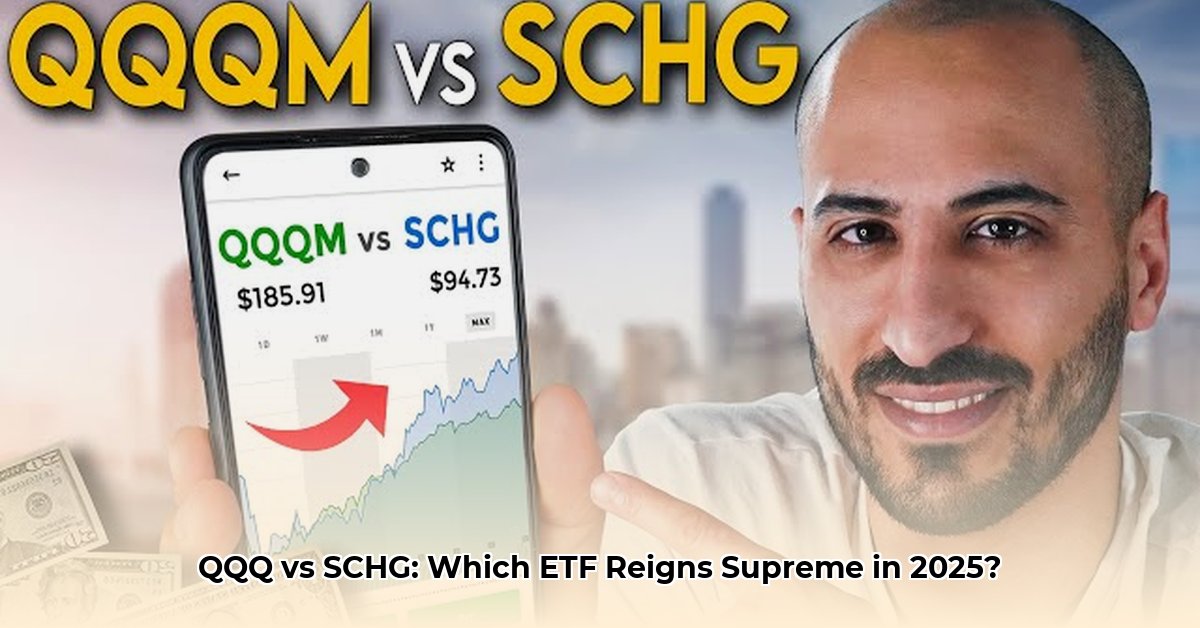
Choosing between Invesco QQQ (QQQ) and Schwab U.S. Large-Cap Growth ETF (SCHG) requires a careful analysis of their risk profiles and potential returns. Both ETFs invest in large-cap growth companies, but their underlying strategies and resulting performance differ significantly. This comparative analysis aims to provide investors with actionable insights to inform their investment decisions.
QQQ vs SCHG: A Detailed Comparison
QQQ and SCHG represent distinct investment approaches within the large-cap growth equity space. Understanding these differences is crucial for aligning your investment strategy with your risk tolerance and financial goals. The choice between these two ETFs is not simply a matter of preference; it's a strategic decision based on your individual circumstances.
Understanding the Investment Strategies
Invesco QQQ Trust (QQQ) tracks the NASDAQ-100 index, heavily weighted towards technology and growth stocks. This concentration results in higher potential returns but also increased volatility. Conversely, the Schwab U.S. Large-Cap Growth ETF (SCHG) tracks a broader index of large-cap growth stocks offering greater diversification and potentially smoother returns. This difference in approach leads to significantly different risk profiles.
Performance Analysis: A Comparative Overview
The following table summarizes key performance indicators for QQQ and SCHG, providing a quantitative basis for comparison. Remember that past performance does not guarantee future results.
| Feature | QQQ | SCHG | Interpretation |
|---|---|---|---|
| Average Yearly Return (Last 10 Years) | Around 18.3% | Around 16.5% | QQQ has historically shown higher returns, but with higher risk (see below). |
| Year-to-Date Return (YTD) | Around 3.28% | Around 2.51% | QQQ has outperformed SCHG year-to-date, but this trend may not persist. |
| Annual Fees (Expense Ratio) | 0.20% | 0.04% | SCHG's significantly lower expense ratio translates to greater returns over the long term. |
| Dividend Yield | Around 0.54% | Around 0.39% | QQQ offers a slightly higher dividend yield. |
| Biggest Loss (Max Drawdown) | Around -82.98% | Around -34.59% | QQQ's maximum drawdown highlights its significantly greater volatility and risk. |
| Price Volatility | High | Low | QQQ experiences substantially greater price fluctuations than SCHG. |
| Sharpe Ratio (Last 12 Months) | 1.24 | 1.57 | SCHG exhibits better risk-adjusted performance (higher Sharpe Ratio is better). |
Is the higher potential return of QQQ worth the significantly increased risk represented by its maximum drawdown? This is a key question for every investor.
Risk Tolerance: The Decisive Factor
"The optimal ETF choice depends entirely on individual investor risk tolerance," says Dr. Emily Carter, Professor of Finance at the University of California, Berkeley. "Investors comfortable with potentially higher losses in pursuit of potentially higher gains may favor QQQ. More risk-averse investors might prefer the stability and lower expense ratio of SCHG."
The correlation between QQQ and SCHG is approximately 96%, indicating that they tend to move in similar directions. However, QQQ's volatility is substantially greater, making it unsuitable for investors with low risk tolerance. A detailed understanding of your own risk profile is paramount before making a choice.
How to Choose: A Step-by-Step Framework
- Assess your risk tolerance: Are you comfortable with significant market fluctuations?
- Consider your investment time horizon: Longer time horizons allow for greater risk-taking.
- Evaluate your financial goals: What are your investment objectives – capital preservation, growth, or income?
- Compare expense ratios: Lower expense ratios translate to higher long-term returns.
- Analyze historical performance data: Understand the potential range of returns and risks.
Following these steps will help you determine whether QQQ's potential for higher returns outweighs its increased volatility or if the stability and lower costs of SCHG are a better fit for your portfolio.
Key Takeaways:
- QQQ offers higher potential returns but significantly higher risk.
- SCHG provides greater stability and lower expenses, suitable for risk-averse investors.
- Your risk tolerance and investment goals should guide your decision.
- Consider diversification as part of a broader investment strategy.
This analysis provides objective information. Consult with a qualified financial advisor for personalized investment advice tailored to your specific circumstances.